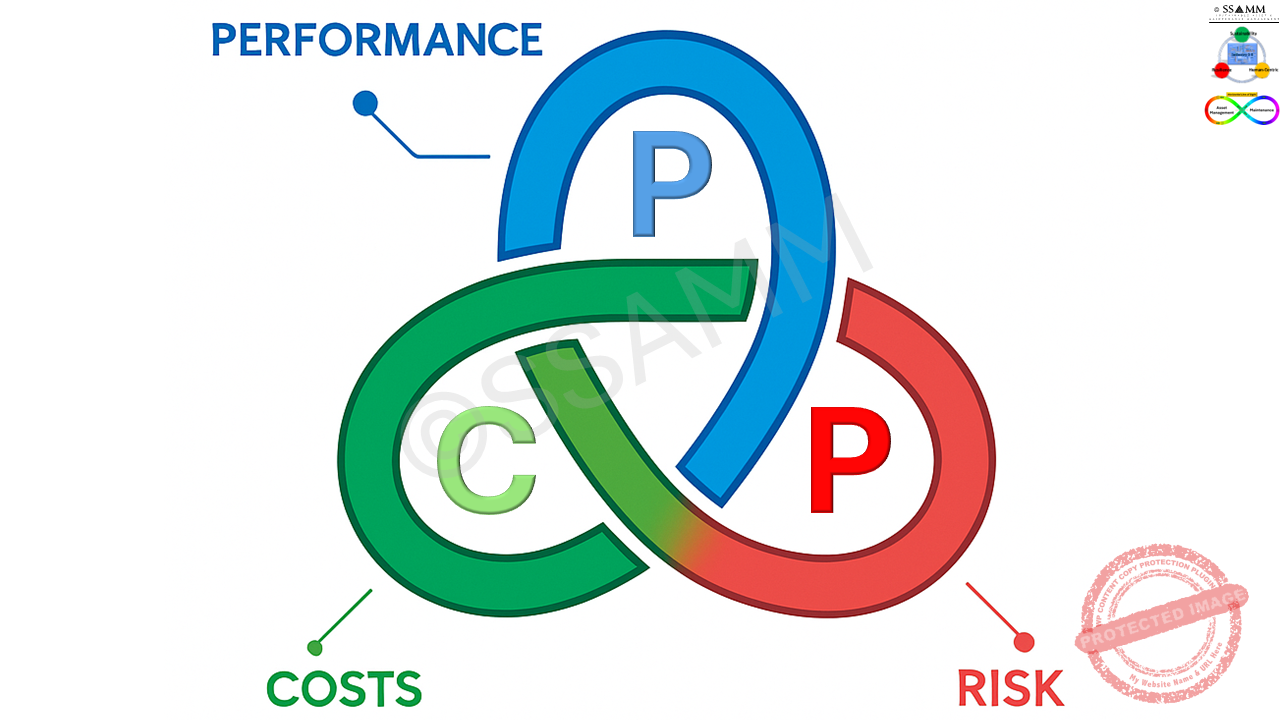The Performance – Cost – Risk Trefoil Balance
Every serious decision in Asset & Maintenance Management ultimately turns on one recurring question: how do we balance Performance, Cost and Risk? In practice, these three dimensions are often discussed as if they were separate – competing agendas to be traded off. The P–C–R Trefoil Balance offers a different perspective: it treats Performance (P), Cost (C) and Risk (R) as one integrated system, visualised as a trefoil knot formed by a single continuous band.
In this metaphor there are no three arrows pulling apart, but one unbroken loop. Each lobe represents P, C or R, yet the band remains one: a single value system. At every significant decision gate the key question becomes: which lobe is “on top” here – P, C or R – and under which constraints? The Trefoil Balance makes that local dominance explicit, together with thresholds such as minimum required performance, maximum tolerable risk (for example ALARP) and life cycle cost limits. Decisions move from vague “we balanced things” stories to traceable, reviewable trade-offs.
At the heart of the A&MM lemniscate, the trefoil acts as a decision gate between the Asset Management landscape (ISO 55000:2024, SAMP/AMP, risk appetite) and the Maintenance landscape (CEN/TC 319 maintenance standards, processes, roles and competences). On one side, organisational value is translated into objectives and criteria; on the other, maintenance policies, strategies and work execution are structured according to standards such as EN 17485, EN 17007 and EN 15628. The P–C–R Trefoil Balance is exactly where intent and execution meet – and where it becomes visible how they have actually been reconciled.
The Strategic Maintenance Policy (SMP) defines how trefoil rules and thresholds apply across portfolios and programmes, embedding P–C–R dominance criteria into maintenance governance.
The Borromean rings complement the trefoil by emphasising completeness: if any of the three dimensions is removed from consideration, the integrity of the system collapses. While the trefoil expresses local priority within an integrated loop, the rings remind decision-makers that all three dimensions must always be present in the discussion.
In an Industry 5.0 context, with digital twins, AI and advanced analytics, the trefoil provides a clear governance frame: algorithms can generate options, but the trefoil shows which dimension takes precedence in which context, why the chosen thresholds are acceptable, and how outcomes will be monitored. Human judgement remains central, yet is supported by a consistent, transparent logic.
The corresponding chapter takes the P–C–R Trefoil Balance from metaphor to working instrument: how to make it the decision gate in your own organisation, how to connect it to the ISO 55000 Asset Management System and the CEN/TC 319 maintenance framework, and how to embed it in the VCS Line of Sight and your Strategic Maintenance Policy.
If you have ever wondered whether your organisation truly has Performance, Cost and Risk “in balance”, this chapter shows how to turn that question into a repeatable, explainable and value-driven practice.


